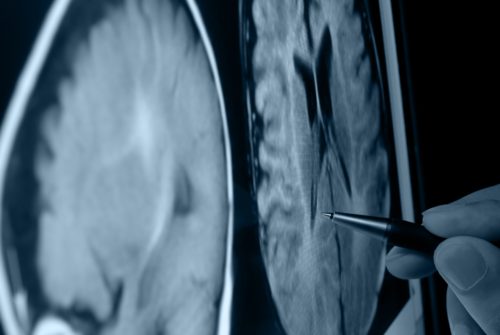
The Science Behind Happiness
The Definition of Happiness
The dictionary defines happiness as, “the state of being happy,” which sounds obvious, but ambiguous.
Other definitions include: Good fortune – A state of well-being and contentment – A pleasurable or satisfying experience.
Still, none of these explain what happiness actually is. The field of psychology describes happiness as the experience of frequent positive emotions, such as joy, interest, pride, and infrequent negative emotions, such as sadness, anxiety, and anger.
Now, we’re getting a little closer. To get a little more specific I’ll go with the following definition,
“Happiness is the appreciation of life, moments of pleasure, but overall it has to do with the positive experience of emotions.”
Let’s dig a little deeper….

You Won the lottery!
You’re set for life, is this happiness?
If you had a chance to watch the Ted Talk by Dan Gilbert he provided examples comparing happiness levels in lottery winners compared to quadriplegic patients. The results were surprising to say the least. He found that after one year of living with change, both groups leveled out at the same level of happiness.
This is surprising, because we all imagine how much happier we’d be if we won the lottery. Turns out this is just a trick the brain plays on us! Gilbert talks about studies which found after only 3 months, even major life trauma (with a few exceptions) had no impact on happiness. This is really interesting to consider! Gilbert also explains we are equipped with a non-conscious cognitive process, that helps us change our views of the world.
Again, let’s go even deeper…

The Human Brain
The frontal lobe is the part of the brain located directly behind the forehead and is responsible for behavior, learning, personality, and voluntary movement. This is the part of the brain that separates humans from other animals.
The prefrontal cortex is located in the frontal lobe. Gilbert explains this part of the brain as an experience simulator that allows us to imagine experiences without them having to actually happen. No other animal has this ability.
According to Gilbert, the brain generates two types of happiness – natural and synthetic. He defines natural happiness as the result of getting something we wanted, and synthetic happiness as what we make when we don’t get what we wanted. What he’s saying is that it’s actually possible to create your own happiness. However, our society has strong beliefs that synthetic happiness is inferior to natural happiness, some feel this is wrong, while others find truth in it. What do you think?
Important Points
What we can take away from Gilberts research is:
- A happy life is not always about getting what you want. It is about learning to enjoy what you get.
- Synthetic happiness is not “cheating” yourself to happier.
- Natural happiness primarily relies on external factors whereas synthetic happiness primarily relies on internal factors. As such, synthetic happiness can be a more long- term, stable form of happiness than natural happiness.
- General happiness in life comes from the relationship between natural happiness and synthetic happiness.
Chemicals in the Brain Related to Happiness
Serotonin
Serotonin is considered a ‘happy’ hormone because of its mood boosting effects. Lack of this hormone is associated with depression.
Give yourself a boost of serotonin by:
- Focus on positive memories for things you’re grateful for to produce more serotonin.
- Get some sunshine. When sunlight is absorbed by our skin, vitamin D is produced which in turn helps produce serotonin.
- Low intensity exercise, such as going for a walk boosts the release of serotonin.
Dopamine
Dopamine is a ‘pleasure’ hormone, it increases our drive to accomplish a goal so we can experience the pleasure of the reward.
Give yourself a boost of dopamine by:
- Set specific measurable goals and achieving them. This can be as simple as making your bed in the morning!
- Dopamine levels rise with serotonin during exercise!
Oxytocin
Oxytocin is the ‘love’ hormone and is released upon physical contact. From childbirth to a hug, oxytocin is there providing feelings of love and trust.
Give yourself a boost of oxytocin by:
- Get a massage, the prolonged physical contact releases oxytocin.
- Hug and cuddle loved ones often.

Words of Wisdom
The ancient Greeks defined happiness as:
“Happiness is the joy that we feel when we’re striving after our potential.”
Aristotle said:
“Happiness is a state of activity.”
Eleanor Roosevelt said:
“Someone once asked me what I regarded as the three most important requirements for happiness. My answer was: A feeling that you have been honest with yourself and those around you; a feeling that you have done the best you could both in your personal life and in your work; and the ability to love others.”
Michael J. Fox said:
“My happiness grows in direct proportion to my acceptance, and in inverse proportion to my expectations.”
How would YOU define happiness yourself?
What Does 75 Years of Research Tell Us?

Director of the Harvard Study of Adult Development, Robert Waldinger, shares findings from an ongoing study regarding happiness. The study is 75 years in the making, starting in 1938 with a group of Harvard College students. The study has evolved to include more participants, and every two years a research group conducts interviews, obtains medical records, and completes brain scans. Waldinger states, “The clearest message that we get from this 75-year study is this: “Good relationships keep us happier and healthier. Period.”
The three main lessons learned from the study are about relationships.
- The more socially connected someone is to family, friends, and community, the healthier and happier they are. People who are isolated suffer from poorer health and are less happy.
- The next lesson learned is regarding the quality of relationships. Someone can be in a crowd and still lonely, so the number of friends someone has doesn’t indicate happiness, but having close connections does.
- The final lesson learned is that good relationships don’t just protect our bodies, they protect our brains too.
The study found that when participants had others to lean on, and continually developed close relationships, these individuals experienced more overall happiness.
Developing Deep Relationships

So we know the importance of having good relationships to be happy, but how do we develop and sustain good relationships?
This can be as simple as:
- Replacing screen time with face to face time with the people you care about or are cultivating new relationships with.
- Liven up a relationship by doing something new together.
- Reestablish date night or start a weekly game night with a group of friends or family.
- Reach out to a family member you’ve lost touch with.
- Spend time outdoors doing activities with family and friends.
Gratitude

Gratitude is a great way to foster a happier disposition.
Robert A. Emmons, Ph.D., has been coined the world’s leading scientific expert on gratitude. His research findings show that people who regularly practice gratitude
report experiencing more joy, pleasure, optimism, happiness, and higher levels of positive emotions. Emmons emphasizes the importance of making a distinction between feeling grateful
and being grateful. According to Emmons, feelings develop from the way we see the world, the thoughts we have about the way things are, and perceptions of the way we think things should be. Being grateful, on the other hand, is a choice.
“Gratitude provides a perspective from which we can view life in its entirety and not be overwhelmed by temporary circumstances,” says Emmons.
Let’s take a look at techniques for becoming more grateful…
- Start a journal. Set aside some time each day to recall and record moments of gratitude.
- Reflect on these questions, “What have I received from __?” “What have I given to__?” and “What troubles and difficulty have I caused?”
- Prayers of gratitude are considered in many spiritual traditions as the most powerful form of prayer.
- Visual reminders are a great way to trigger mindfulness and thoughts of gratitude.
- Practice the motions. Smiling, saying thank you, and writing letters of gratitude regularly will strengthen the emotion of gratitude.
- Each circumstance offers an opportunity for gratitude, be creative and look for new situations where you can express gratitude.
Mindfulness

Mindfulness is defined as, “A mental state achieved by focusing one’s awareness on the present moment, while calmly acknowledging and accepting one’s feelings, thoughts, and bodily sensations, used as a therapeutic technique.”
Ultimately, mindfulness is the focus on the here and now. Achieving mindfulness is not easy, and takes practice. Research has shown those who practice mindfulness regularly are happier because their thoughts are not consumed by thoughts of fear for something yet to come, controlling future situations, or analyzing circumstances that have passed. Mindfulness teaches the ability to center yourself and develop your inner resources which deepens happiness.
Mindfulness can lead to happiness by:
- Ending the loop of negative thoughts
- Helping you connect better with others
- Deepening inner contentment
- Enhancing the experience of gratitude
Mindfulness Techniques
Mindfulness doesn’t happen automatically, but with a little practice we can retrain the brain.
Try this exercise to get you started:
Five Senses Exercise
The goal of mindfulness is to focus on the current moment. This exercise will help you get started.
- Notice five things that you can see. Try focusing on something you don’t normally notice, a shadow or leaf etc.
- Notice four things that you can feel. Bring awareness to things you currently feel, the texture of your clothing, a breeze, etc.
- Notice three things you can hear. Listen and mentally note three things you can hear; a bird chirping, the hum of the refrigerator, etc.
- Notice two things you can smell. Try to identify smells you wouldn’t normally notice.
- Notice one thing you can taste. This can be a sip of water, gum, food, etc.
Expand Your Mindfulness Practice
Once you’re comfortable with the idea of mindfulness, try this technique to deepen your practice.
Step 1: Turn off “automatic pilot” by bringing awareness to what you’re doing, thinking, and sensing in this moment. Take a moment to settle into a comfortable posture. Notice the thoughts that come up and acknowledge your feelings, but let them pass.
Step 2: Bring awareness to your breath. Focus only on the act of breathing and how your body reacts with each breath, for example how your chest rises and falls, how your belly pushes in and out, and how your lungs expand and contract. Find the pattern of your breath and anchor yourself to the present with this awareness.
Step 3: Expand your awareness outward by noticing the sensations you are experiencing, like tightness, aches, or perhaps a lightness in your face or shoulders.
You can take this step further by expanding your awareness even further to the environment around you.
Findings of Nancy Etcoff

Nancy Etcoff is an evolutionary psychologist and instructor of “The Science of Happiness” at Harvard Medical School. Her research into the question of happiness exposes surprising results. Her findings reinforce things we should’ve known all along, like the fact that having flowers in the house really does make us happier. In her TED Talk, Etcoff says, “We are wired to pursue happiness, not only to enjoy it, but to want more and more of it.” One of the key points in the science of happiness is that happiness and unhappiness are not endpoints of a single continuum. In a study of recovering hospital patients two groups were examined. One group faced a brick wall while another looked out on trees and nature. The group who looked out on the brick wall were in the hospital longer, needed more medication, and had more medical complications. According to Etcoff, happiness is contagious, and our happiness will have a positive effect on our friends, but also our friends’ friends.
The Connection Between Nature, Beauty and Happiness

Research is growing on the connection that nature makes us healthier and happier people.
A 30 day study was conducted that involved people “doing something wild” every day for 30 consecutive days. Participants were asked to complete a survey at the beginning and end of the study about their perceived connection to nature, how they interacted with nature, and how they felt about their health and happiness. The study showed that there was a scientifically significant increase in people’s health, happiness, and connection to nature just by being encouraged to spend time with it. Amazingly, the participant’s new found happiness was even sustained for months following the challenge. One theory accounting for the nature-happiness link is the “biophilia hypothesis,” which suggests that we love nature because we evolved in it.
Nature teaches us that there is nothing wrong with us. In fact, studies show that people’s body image improves by focusing on nature. The diversity found in nature reinforces the beauty in being different. Time slows down. Urgency and deadlines melt away. Ecosystems embody harmony and balance. Quietly witnessing this balance and harmony renews our appreciation. Nature calls you back to reality allowing you to surrender comfort, control, and reinforces acceptance. As we remove the chaotic noises of society and replace them with sounds of nature, we become more calm. Being in nature provides a sense of awe. We realize there are things at play much larger than us.
Happiness Comes from Giving

Studies show lottery winners do not become significantly happier than they were before. Extremely rich people are not significantly happier than others either.
Research has found that possessing wealth and material goods does not lead to happiness, giving them away actually does. Studies of people who practice volunteering have shown that they have better psychological, mental health, and increased longevity. Another study has shown donating money or spending money on experiences rather than material goods is positively correlated with happiness.
By being more generous and altruistic, happiness increases with the amount of money you give to people in need, by volunteering, or spending more time helping other people.
Here are a list of different ways to give back without spending money:
- Volunteer for a cause you care about
- Cook for those in need
- Give blood
- Become a mentor
- Assist seniors in need
- Lift a soldier’s spirits
- Help build a house
- Share your skills
- Pick up trash
- And much, much more!
Final Tips
Here are some proven techniques to cultivate more happiness:
- Savor the moment
- Take control of your time
- Share a smile
- Exercise and make time for sleep
- Give time and attention to close relationships
- Be mindful
- Express gratitude
- Cultivate good eating and hydrating practices
“The key to happiness is knowing you have the power to choose what to accept and what to let go.”
Be Happy. Be Blessed. Be Bombdiggity.
